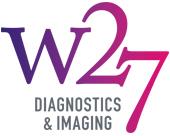What is it
X-rays (Radiography) uses a type of radiation that passes through the body to produce images of different body structures.
What it is used for
X-rays are routinely used to diagnose many different conditions including fractures and dislocations in the context of trauma, calcification in tendons, arthritis, joint alignments, inflammation and infection. They may also be used to guide surgeons during certain surgical procedures and operations.
What to expect
Depending on what body part needs imaging, you will normally either sit, stand or lie on a flat surface during an X-ray. X-rays are painless and quick depending on what body parts need imaging. They are usually performed by a radiographer (a specialist technician trained in X-ray). You will be asked to keep still so the image is clear, otherwise the slightest of movement can cause blurring of the image. Usually X-rays are taken from different angles to allow the best possible chance for the radiologist (specialist doctor trained in imaging) to make a diagnosis.
Before and after
You don’t need to stop eating and drinking before an X-ray for musculoskeletal applications. Sometimes you may need to wear a gown as clothing e.g. zips may interfere with the images taken. For similar reasons, you may be asked to remove any jewellery, watches, chains, rings etc. if they interfere with the images needed. After all your images are taken, you are free to go and the results are sent to your referring doctor once the radiologist has completed the report.






